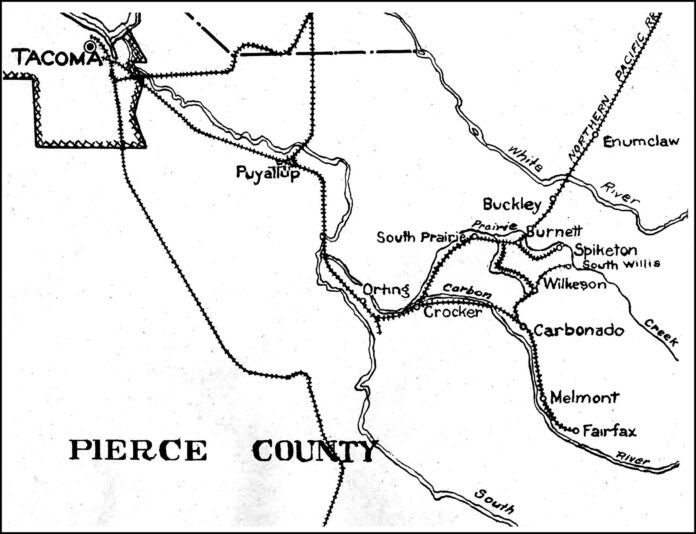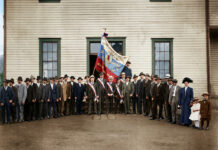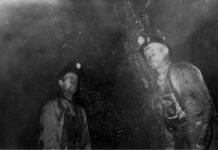During the first 100 years of coal mining in Washington, the top three producing counties in order were Kittitas (Roslyn, Cle Elum, Ronald), King County (Newcastle, Issaquah, Ravensdale, Black Diamond, Franklin, Cumberland), and Pierce County whose coal mining towns are noted below.
However, from 1971 to November 2006, the Centralia surface coal mine in Lewis County dwarfed all previous mines extracting 160 million tons of coal, all of it burned in Centralia Big Hanaford coal-fired power plant. Coal will continue to generate electricity there until December 2025, when the last coal-fired burner will shut down. When this last remnant of Washington’s coal mining and usage closes, it will close an important chapter in the state’s history
Here’s a brief biography of the 21 Pierce County towns and railroad stops and how each was named plus subsequent changes. Only the major towns are shown on the accompanying map.
Arline – A small lumber mill and stop on the Northern Pacific (N.P.) Railway near South Prairie was named after the daughter of its founder Orville Biggs. The town was established about 1900.
Buckley – The town began as a sawmill and a center of logging. Early names were Perkins Landing and Perkins Prairie. When the N.P. built the railroad from Stampede Pass to Tacoma in 1885, officials chose the name White River Siding. When the townsite was platted in 1888 by Alexander Wickersham, he named it after J.M. Buckley, a division superintendent of Northern Pacific and a coal mine promoter. Buckley was incorporated in 1890.
Burnett – The community of Burnett is above South Prairie Creek and is named after Charles H. Burnett, operator of the South Prairie Coal Company. For a time, Lower Burnett on the creek level below had the railroad station and other buildings.
Carbonado – Carbonado was named for the Carbon River which flows through the nearby canyon. The river was named for the coal seams which were found there. The post office was established on May 7, 1880, as Carbondale, after a town in Pennsylvania where some of the miners came from. Carbonado was incorporated on Sept. 13, 1948.
Crocker – This community is east of Orting and was once a junction on the N.P. line that supported a rail station and a school. Charles Crocker was a California railroad magnate and one of four investors who purchased the Carbon Hill Coal Company in 1882. Crocker supported coke ovens and some of Carbon Hill’s output supplied coal to the Southern Pacific Railway.
Douty – A series of coal bunkers built on the Carbon River below Carbonado and a sawmill were collectively known as Douty in the early 1900s. Named for F. S. Douty who was Carbon Hill Coal Company’s secretary, the name was short-lived, and the mines were possibly renamed as Wingate.
Fairfax – Fairfax was once a busy coal-mining town south of Melmont on the Carbon River. Sixty coke ovens were in operation in 1902. It was discovered in 1892 by W.E. Williams and named by W. A. McNeil, an Iowa railroad and coal investor who began mine development in 1896. The name came from McNeil’s hometown of Fairfax, Iowa, named after Fairfax County, Virginia. Lower Fairfax is completely deserted while there are some homes in Upper Fairfax on the north side of the river. The post office operated from Nov. 1896 to March 1943.
Manley-Moore – Robert D. Moore partnered with J.A. Manley to create a logging company called Manley-Moore. They opened their business in 1907 in Arline, then moved east of Fairfax by rail and created a large sawmill, lumber yard, and community in 1909. The town featured a one-room store, a schoolhouse, a 26-room hotel, and fifty dwellings, many for Japanese workers and their families. A small rail car called a ‘speeder’ made daily trips to Fairfax, about a mile away to pick up the mail and fresh milk each morning.Manley-Moore ceased to exist about 1934 when the company went bankrupt.
Melmont – Located south of Carbonado on the Carbon River, below the Fairfax Bridge, Melmont was difficult to get to by road. Most traveled to and from by railroad. Before the Fairfax Bridge was built in 1921, a smaller bridge united Fairfax and Melmont. The town was founded by the Northwestern Improvement Co., a coal mining subsidiary of N.P. Railway about 1900 and declined rapidly after a coal strike and fire in the early 1920s. The new schoolhouse was dismantled in 1920 and the wood re-used to build the Poch family home from which they operated a small store on the first floor. That home is now the headquarters for Mt. Rainier ranger station near the Carbon River entrance.
Montezuma – This logging town near the Carbon River was owned by the Manley-Moore Lumber Company which operated there between 1910 and 1935. The Montezuma mine which preceded the lumber town was nearby. The Montezuma Mining Company was organized in 1890 by a Tacoma syndicate and opened in 1901. The post office was established in 1901 and closed in 1903. Mine owners were searching for wealth like that of Montezuma, the Aztec emperor at the time of Hernán Cortés, a Spanish conquistador who led an expedition that caused the fall of the Aztec empire. Mine production closed permanently in 1916.
Mowich – The word comes from the Chinook Jargon and means ‘deer’ and is also the name of a Mount Rainier glacier from which the North Mowich River flows.
Pittsburg, Spiketon, Morristown, and Black Carbon – All were named for the same coal mining community located east of Wilkeson and Burnett. The Pittsburgh name came from the great coal and steel center of western Pennsylvania. The name Spiketon came from a man named W.D.C. Spike, who opened a coal prospect in 1905 with his Pacific Coal & Oil Company. The Coast Coal Company with Abraham Morris in charge had operations in the area in 1911. Abe Morris was elected to the Washington State Legislature in 1917 and 1919. A post office was established as Spiketon in 1910, then in 1921 the Legislature renamed it Morristown to honor Abe Morris, who was appointed as State Coal Mine Inspector. Black Carbon Coal Co. took over the mine of Luzon Coal Co. near Pittsburg and the name periodically resurfaced. Although some records indicate that the post office was Black Carbon, it was actually one-half mile west of Morristown.
South Prairie – This prairie on South Prairie Creek is southwest of Buckley. It was named by Paul Emery, who filed for a Donation Land Claim there in the 1850s. He was forced to flee his land claim for refuge during the Indian Wars of 1855-56. The N.P. Railway adopted the name for a station in 1881. It was incorporated on Feb. 17, 1909.
South Willis – This coal mining community was about one mile east of Wilkeson. The mines there were first developed beginning in 1902. Bailey Willis was a mining engineer who wrote several reports on coal mining and geology of Pierce County in the 1880s and named a number of places in what is now Mount Rainier National Park.
Wilkeson – The town is located on Wilkeson Creek southwest of Buckley. Wilkeson’s first coal mining operations began as early as 1874. Prior to 1877, the original and short-lived name for downtown Wilkeson was Hope. On May 8, 1877, the railroad depot opened and was named after Samuel Wilkeson, secretary of the board of N.P. Railway. That same year the post office and school opened. The town was incorporated in July 1909. Uptown Wilkeson was located southeast of downtown, around the bend on what is now Quinnon Road. Across the street remains 30 of the 160 original coke ovens and the foundation of the coal washing plant is all that remains of this company town today.
Wingate – The community of Wingate was southeast of Crocker, across the river from Carbonado. Robert Wingate discovered and developed coal mines in the area beginning in 1879. He was also involved in other Tacoma business activities, was one of the organizers of the Tacoma National Bank, and once owned a street car line.
Morse, Valley Mills, Wilson Mills, Cascade Junction, and Broomfield were all former stops along the N.P. Railway. Their origins and history are unknown.
This history was adapted from Jim Frederickson, who assembled this history of East Pierce County town names. He enjoyed a 39-year career with the Northern Pacific Railway. In 2004, Fredrickson was honored by the Tacoma Historical Society which presented him with their Murray Morgan Award for individuals who have significantly contributed efforts to preserve and communicate local history.







